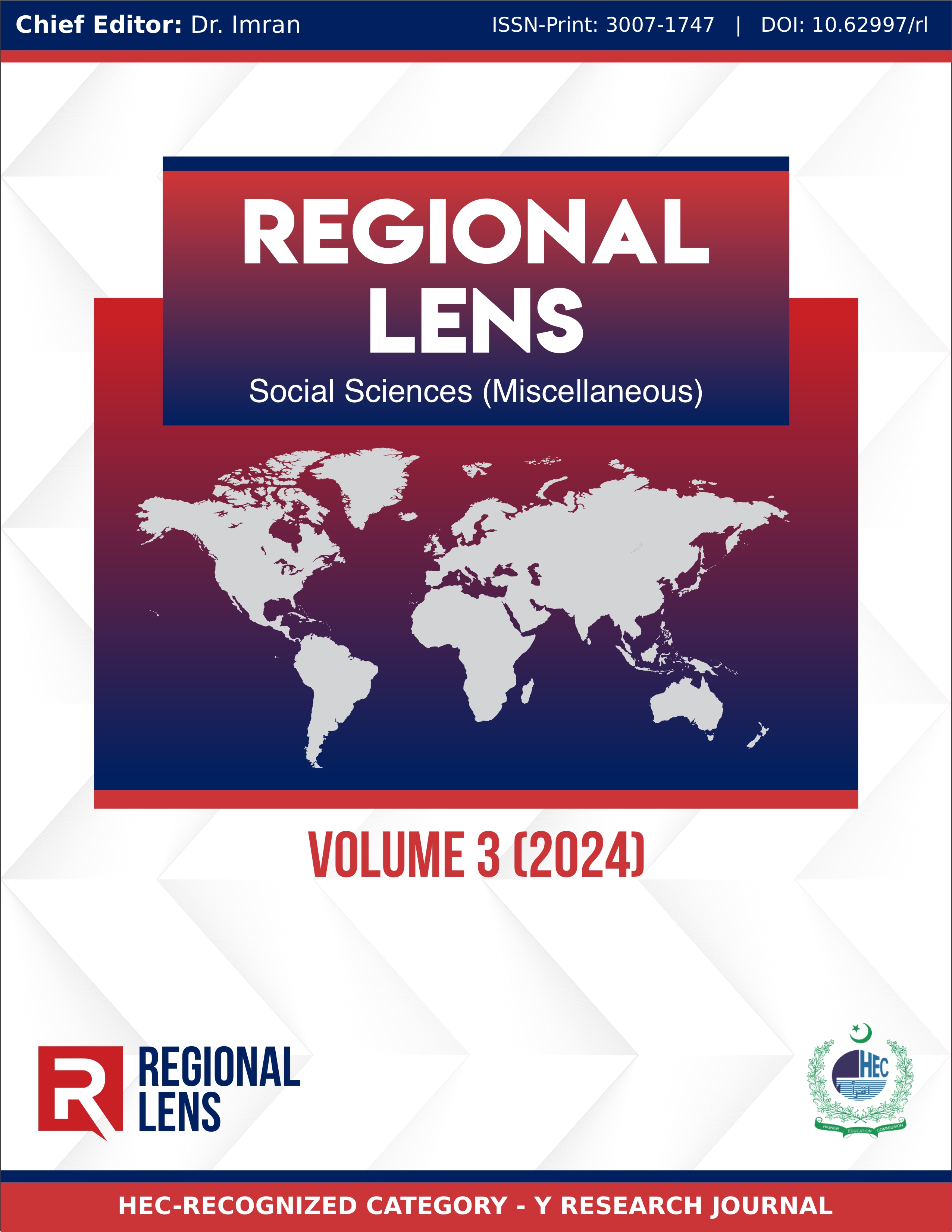A Multi-model Perspective of Economy-related Semiotic Discourses of Pakistani Print Media
DOI:
https://doi.org/10.62997/rl.2024.31020Keywords:
IMF, Economy, Cartoons/Semiotic Discourses, Ideology, Semiology, MultimodalityAbstract
Graphic satire is one of the important genres of print media and it is very tactfully used to cartoon the dual faces of the politicians and other persons belonging to various domains of life. Its significance cannot be denied as cartoons are meant for everybody. The present study critically decodes the semiotics related to IMF and economic issues of Pakistan which appeared in Dawn (daily) from May 1st 2023 to May 1st, 2024. The present study employs an integrated research design to analyse the data, which comprises three modes. These modes include word, picture and remarks of focus group participants. The integrated research model has been devised by drawing upon Fairclough (2003), Kress (2010) and Kruger’s (2002) research model to analyse visual and verbal modes used in the cartoons. In order to validate findings of semiotic analysis the study employs Kruger’s (2002) model of Focus Group discussion data analysis. The findings of the study reveal that the emerging themes include dearness as frightening phenomenon, clutches of IMF on Pakistan, collapsing economy of Pakistan, mockery of Pakistan’s economy, price hiking and its comparison with petrol bomb falling on Pakistani masses. The study maintains that print media discourses mirror social reality of a particular context and are best sites of ideological investment.
References
Barthes, R. (1968). Elements of Semiology. London: Cape.
Barthes, R. (1973). Mythologies. London: Paladin.
Bjorkvall, A. (2014) Practical Function & Meaning: Acase Study IKEA Tables in C. Jewitt, ed, The Routledge hand book of Multimodal Analysis. London: Routledge.
Danesi, M. (2016). Understanding Media Semiotics. London: Arnold.
de Saussure, F. (1916). Cours de Linguistique generale. Paris: Payot.
Eco, U. (2001). The role of the reader. London: Hutchinson.
Fairclough, N. (2003). Analysing Discourse: Textual Analysis for Social Research. London: Routledge.
Fairclough, N. (2015). Analysing Discourse: Textual Analysis for Social Research. London: Routledge.
Haroon,H (2023). Semiotic Analysis of Pakistani Dramas Cover Pages. Zenodo (CERN) European Organization of Nuclear Research
Kress, G. (1989). Language processes in Sociocultural Practice. London: Oxford University Press.
Kress, G. (2010). The Social Production of language: History and Struc¬tures of Domination. In P. H. Fries and M. Gregory (Eds.) Discourse in Society: Systemic Functional Perspectives (Advances in Discourse Processes: Volume 50 - Meaning and Choice in lan¬guage: Studies for Michael Halliday) (pp. 115-140). Norwood: Ablex.
Kress, G. & Hodge, B. (2010). Language an Ideology. London: Routledge and Kegan Paul.
Kress, G. & Van Leeuwen, T. (2006). Reading Images. The Grammar of Visual Design. London: Routledge.
Kress, G. & Van Leeuwen, T. (2011). Reading Images. The Grammar of Visual Design. London: Routledge.
Krueger, R. A. (2002). Designing and conducting focus group interviews. October, available at: www.sph.umn.edu/img/assets/18528/FocGrp_Krueger_Oct02.pdf
Krueger, R. A., & Casey, M. A. (2002). Designing and conducting focus group interviews (Vol. 18).
Saeed. (2022). A systematic review. Scientific Publication
Sajid, A., Buzdar, H. Q., & Shoukat, Z. (2022). Word-Picture Conjunction: A Multimodal Discourse Analysis of Cellular Network Companies Slogans in Pakistan. Journal of Research (Urdu), 27(1), 137-150. https://jorurdu.bzu.edu.pk/website/journal/article/60eae0de6d44e/page
Sajid, M. A., Nazir, M., Shaker, S., & Hussain, S. (2022). A SEMIOLOGICAL DISCOURSE ANALYSIS OF US- TALIBAN RELATIONSHIP IN PAKISTANI ENGLISH NEWSPAPER: PalArch’s Journal of Archaeology Egypt/Egyptology, 19(3), 1063-1072. https://archives.palarch.nl/index.php/jae/article/view/11339
Shakeel, M., Arslan, M. F., & Haroon, H. (2023). An Analysis of Flags as Cultural Icons: A Semiotic Study of 30 Countries. Harf-o-Sukhan, 7(2), 122-145.
Van Dijk, T. A. (2009). Discourse as Social Interaction. London: Sage Publication.




